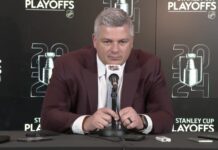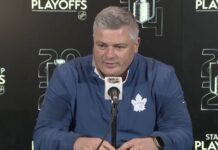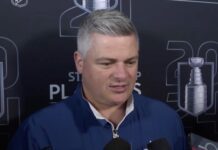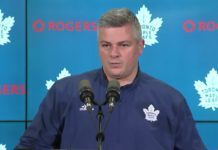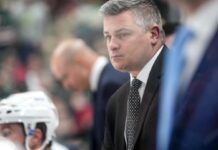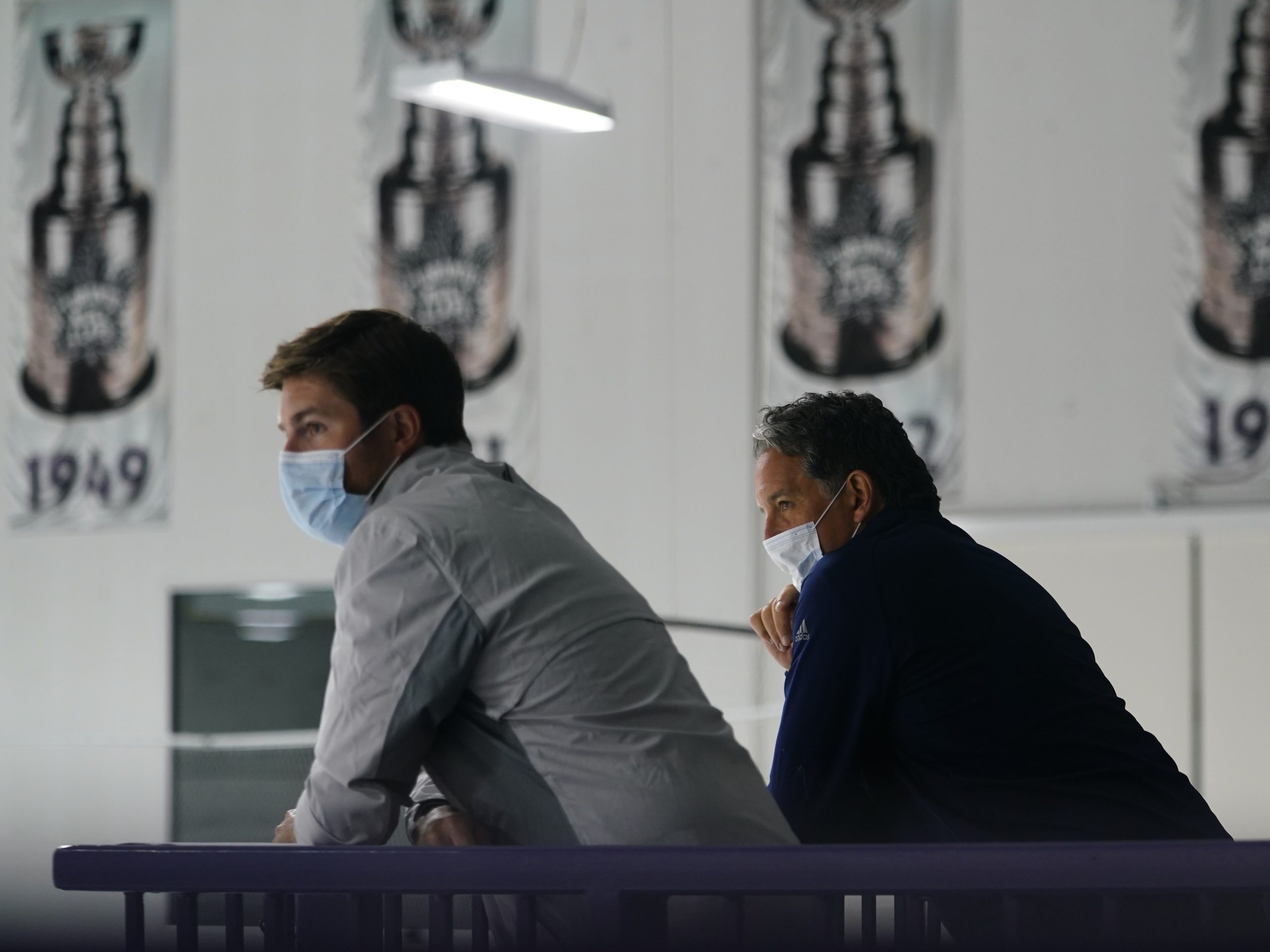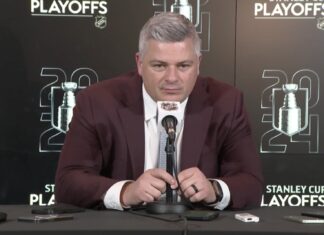It was a busy week for the Toronto Maple Leafs.
Zach Hyman is now a member of the Oilers, Frederik Andersen is off to Carolina, and Zach Bogosian is headed back to Tampa Bay. All of the main trade deadline rentals turned out to be true rentals — Nick Foligno signed with Boston, Riley Nash joined the Jets, and David Rittich took the backup job in Nashville.
While the Leafs avoided any blockbuster deals, they did add plenty of new faces to the roster. This article will look at each of their main additions, examine how the team fared overall, and explore their possible next steps for this offseason.
Petr Mrazek
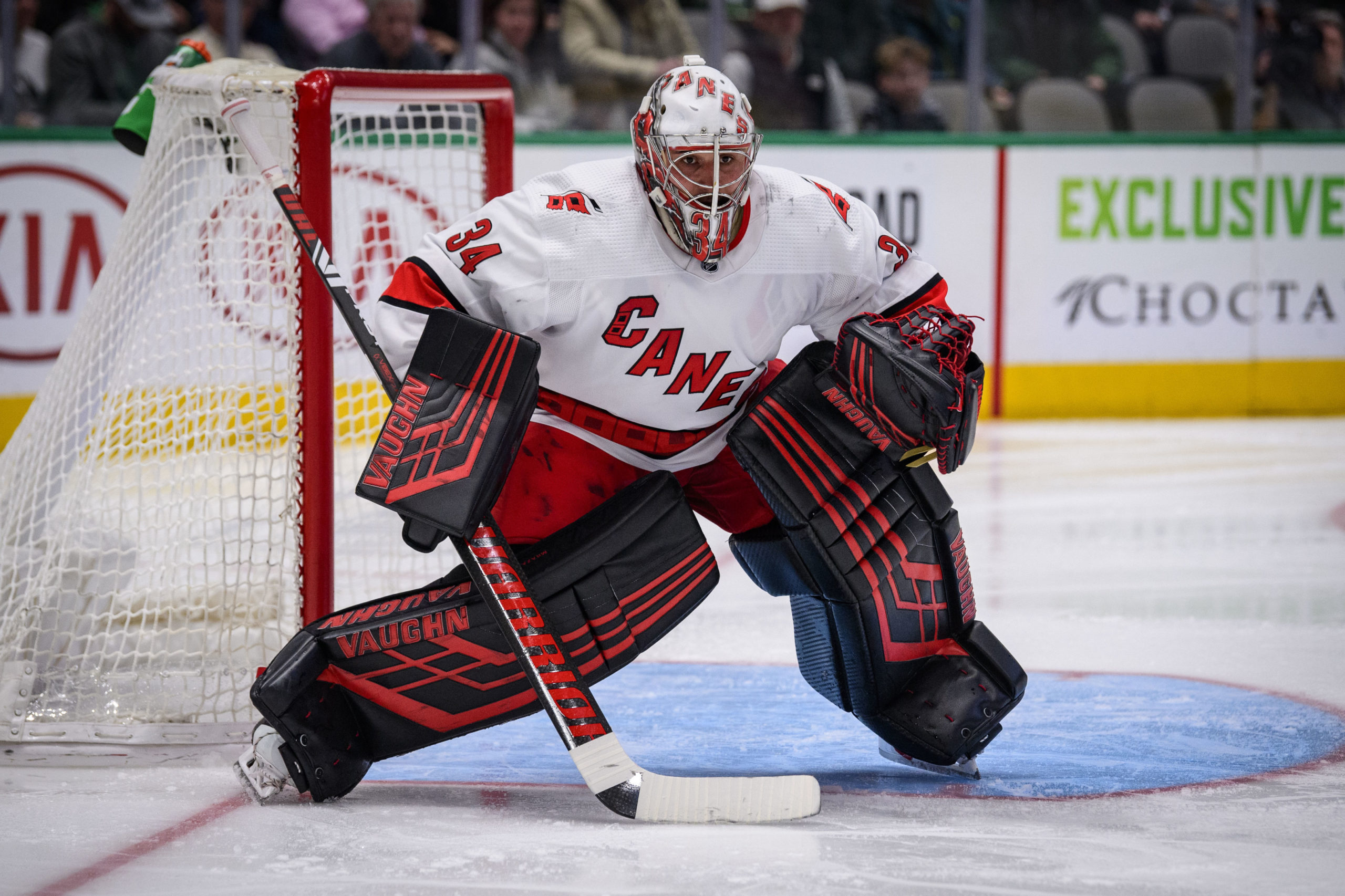
Mrazek was an obvious fit with the Leafs (I predicted that Mrazek would sign with the Leafs in my “Offseason Game Plan” article a few days before he signed). The goalie market is basically a big game of musical chairs. Once free agency started, it looked like Mrazek was the best fit by far.
In their search for a partner for Jack Campbell, a regular backup wasn’t going to cut it. While Campbell was excellent last season, his career-high in NHL games played is 31. Even if Campbell does stay healthy, it’s certainly possible that his performance drops off. Frederik Andersen was a consistent .918 goaltender until he suddenly wasn’t. There is absolutely a chance that Campbell posts a .905 next season. We all hope that Campbell builds on what he did last season, but it would have been foolish to not have a 1B option in place.
Many of the goalies available simply weren’t good enough. James Reimer, Martin Jones, and Braden Holtby do not have the numbers to be counted on as a true 1B at this point. Many of the other goalies available simply weren’t in Toronto’s price range. They could not afford to give Philip Grubauer a $5.9 million AAV, or Linus Ullmark a $5 million AAV. They weren’t giving Frederik Andersen a $4.5 million AAV, or Jonathan Bernier over $4 million per year. They also weren’t giving up the equivalent of Timothy Liljegren and a first-round pick for one season of Darcy Kuemper.
Given the prices out there, only a few other options made sense. Antti Raanta signed for two years at a $2 million AAV, but he’s played 12 games in two of the past three seasons (you better love your third goalie if you sign him). That move would have been quite risky for the Leafs.
Laurent Brossoit signed for a tad more over two seasons, but his career-high in NHL games played is 21. He’s just one year removed from putting up a .895 save percentage in 19 games. Jaroslav Halak signed for $1.5 million over one year, but he just turned 36 and he only played 19 games last season (with a .905 save percentage). Perhaps these three players end up providing more value for what they’re paid, but the Leafs need someone who can play 40+ games if needed. I’m not sure I can count on these goalies to do that.
The other goalie that would have interested me was Vitek Vanecek, but he only has a one-year NHL track record. I also don’t believe he was available until Seattle signed Grubauer.
The price for Mrazek was a little bit higher than expected, and maybe we can blame Seattle for that. The supply in the goalie market was the same as it’s always been, but the demand went up and the prices were higher as a result. Seattle came into the league and said, “We’re going to sign two of the best free-agent goalie options available,” and the other 31 teams were left to fight over a small market. Compared to what the other goalies received, $3.8 million per year for Mrazek looks perfectly fine.
If the Leafs didn’t sign Mrazek, they would have been left with two options. First, they could have done what Colorado ended up doing: overpaying via trade because they were desperate. The Avs have too much riding on next season to go in with a questionable goaltending situation, something the Coyotes took full advantage of.
Alternatively, the Leafs could have ended up with a goalie they weren’t overly happy with and put all their eggs in the Jack Campbell basket. Maybe that sounds like a better idea at the moment, but if Campbell takes a step back next season, you’re going to be happy that Martin Jones is not the backup plan.
One important note on this contract is the structure. It’s a bit backloaded — he’ll make $4.2 million in each of the final two seasons compared to just $2.8 million in the first year. There’s also a 10-team no-trade list throughout the full term of the contract. While the league’s current escrow situation likely prevented the Leafs from front-loading this deal, at least they have 21 possible teams to trade him to if they need to get out of this contract. Ultimately, after watching what happened in Colorado, I can see why the Leafs paid a little bit extra to sign Mrazek.
Having said all that, Mrazek does come with some risk. To start, he played just 12 games last season after struggling a bit the previous season. His career save percentage is .910, but his best seasons were at the start of his career. He hasn’t exactly been a model of consistency in recent years and there is a chance that he’s just an average backup next season.
If Mrazek does struggle this season, you’re probably giving a team like Arizona a draft pick or prospect to get out of that contract. However, every goalie contract of substance comes with some risk. I think the Leafs’ gamble is at least reasonable.
They definitely needed a 1B starter, and they got their guy. Let’s hope he performs.
Michael Bunting
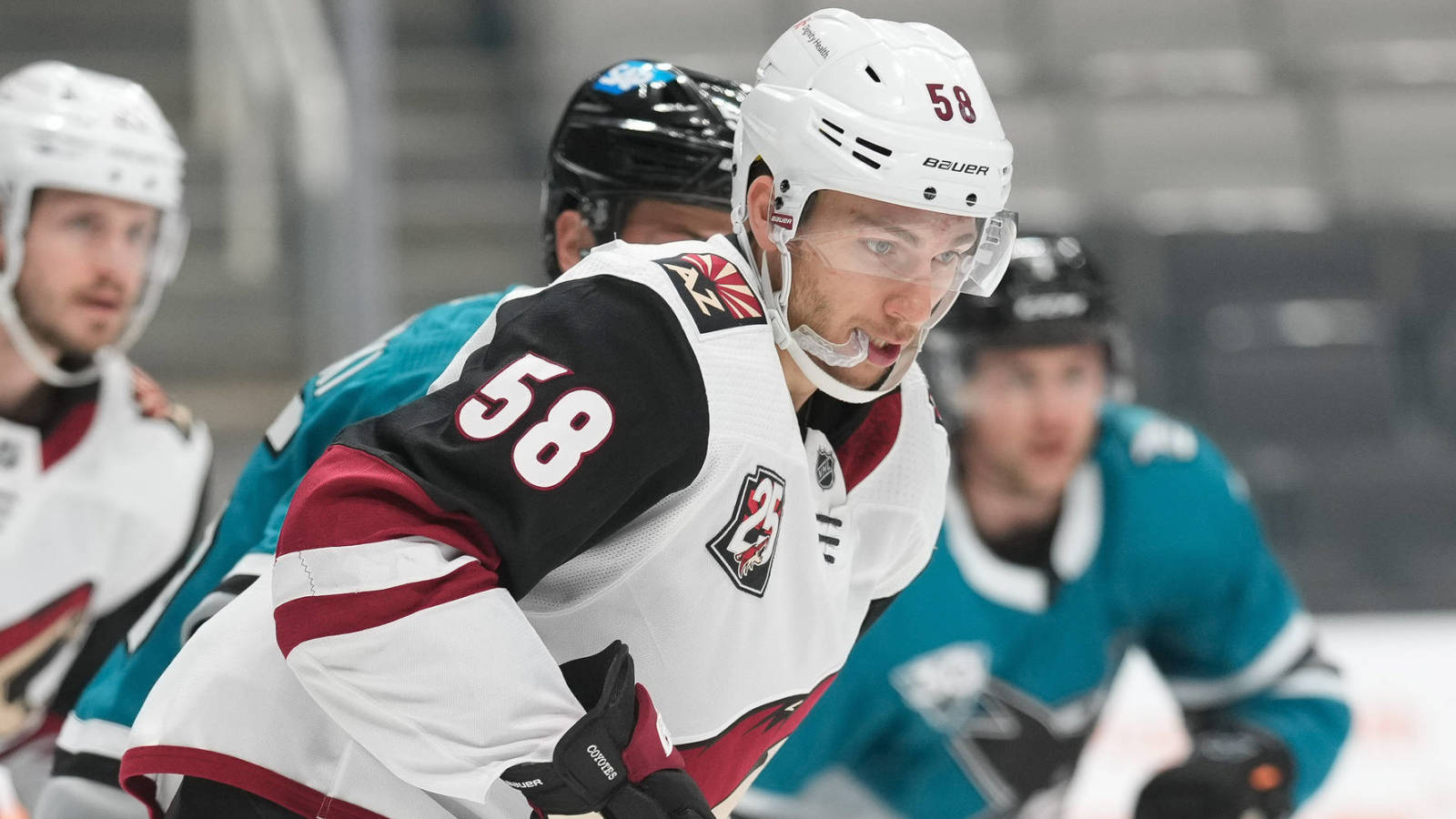
At two years and a $950k AAV, it’s tough to complain about this contract. If Bunting performs well, the Leafs scored a complete bargain who can potentially play in their top six. If he doesn’t play well, the Leafs can easily trade him or bury him in the AHL with no cap penalty. This is a low-risk move with some reward. It’s also a bonus to ink him for less than $1 million for two years. If he plays well this season, you don’t have to worry about a raise next offseason.
With just 26 games of NHL experience under his belt, Bunting has played most of his big-league games on Arizona’s top line. Next to Conor Garland and Nick Schmaltz, Bunting was obviously the third-best player on his line by a wide margin. I’m not fully convinced that he’ll hold down a spot in Toronto’s top six, but I like his work ethic and there’s a chance that he turns into the Leafs’ next Galchenyuk.
He also might end up as a solid fourth-line option, similar to what the Leafs had in Trevor Moore. At a $950k AAV, it’s perfectly fine if that’s the case. In an ideal world, he gains traction in the top six, but still potentially moves down in the lineup if the Leafs add another top-six forward at the deadline.
Bunting can play the net-front role on the power play, where he could chip in a bit on the second unit. While a tad undersized and not an outstanding skater or transition player, he can work hard and take advantage of his opportunities. Even if he only performs like a competent NHL player, the Leafs will take it for $950k.
Bunting played for Kyle Dubas and Sheldon Keefe for the Soo Greyhounds. The relationship likely factored in here, but I see this as a positive rather than a negative. As a fringe NHL player, it is vital that you go to a team that you trust to have your best interests in mind. They can offer him a spot in the top six to start the season, and as they’ve shown with Jimmy Vesey, Alexander Barabanov, and Josh Leivo, they will trade him if they aren’t going to use him.
Given that there is a minimal risk here, it’s tough to see this as anything but a positive situation that helps the Leafs this season.
David Kampf
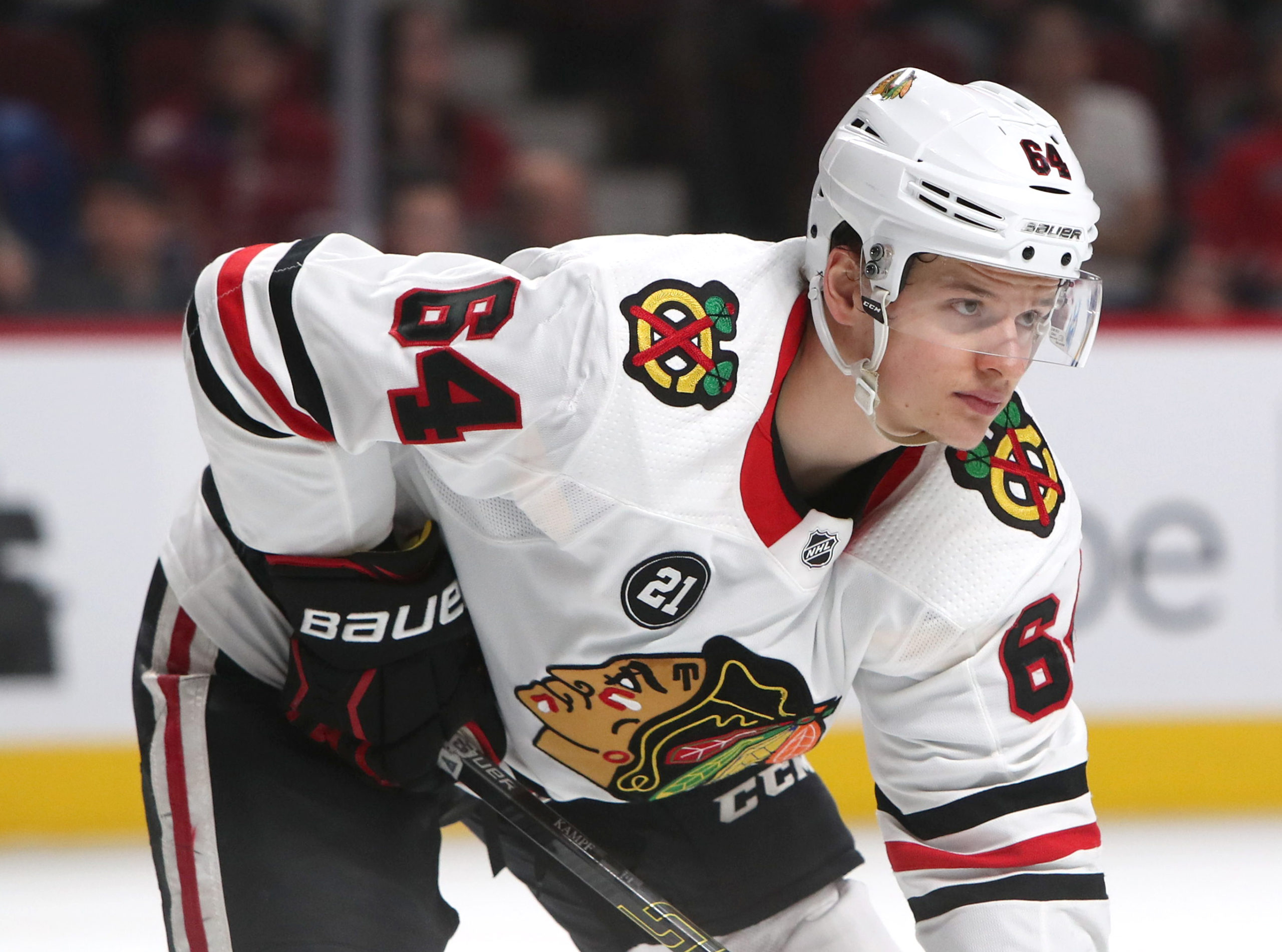
This one could go either way. The Leafs seem to think that he’s a high-end fourth-line center. I can see why they would want to add a 6’2″ center who can win faceoffs, kill penalties, and take some shifts against top competition at 5-on-5. However, given that they can’t just bury this contract in the AHL if things go poorly, there is a little more riding on this panning out.
At a $1.5 million cap hit, he needs to be a good fourth-line center who can also look competent in the top nine when called upon. He’s paid twice the league minimum salary, which is an extra $750k the Leafs could have used elsewhere. If Kampft ends up being Frederik Gauthier-esque, they’ll be paying him twice as much as what he’s worth and we’ll have some serious questions. I’m a bit surprised they signed a $1.5 million fourth-line player before addressing their need for a top-six winger, but this probably speaks to how much they like Kampf’s game.
There are legitimate questions about this team’s scoring depth. The Tampa Bay Lightning just won the Stanley Cup with a third line of Blake Coleman, Yanni Gourde, and Barclay Goodrow, and the Leafs aren’t even close to having something like that. Wayne Simmonds failed to register a primary assist last season with a point-per-minute production at 5-on-5 that has been quite bad for five straight seasons. Kampf has been a complete zero offensively as well, so they now have two weak spots in their bottom six from a scoring perspective.
I like Ilya Mikheyev and Pierre Engvall more than most, but they’re more known for the defensive side of their games. I have no idea if Adam Brooks will be able to stick in the NHL lineup. Alex Kerfoot usually brings some secondary scoring to the table, but who knows how often he’ll even be in the bottom six should the Leafs opt to use him as a top-six winger? Jason Spezza has absolutely carried the bottom six offensively in recent seasons, but he just turned 38, and who knows when his production will drop off?
I’m not sure if the Leafs roster is a finished product, but it does look like they have both Kampf and Simmonds penciled into their bottom six. Any team with both Kampf and Simmonds is going to have some questions about their scoring depth, plain and simple. It also looks like their top six will take a step back next year unless Ondrej Kase is fully healthy and back to his old self. If their bottom six doesn’t end up providing much offensively and the top six takes a small step back, the Leafs better hope they have a consistently good power play.
I’m not too sure what to make of Kampf. If he’s legitimately good defensively and can take on some tough matchups, there is certainly a chance that this deal ends up being a bargain. Again, I can see why they added a fourth-line center who is strong in the faceoff circle, but I was expecting someone with a little bit more offense such as Derek Ryan. I’ll wait to judge this roster until I see the final product, but I hope the Leafs don’t end up with two fourth lines.
Ondrej Kase

Kase, who played just 25 minutes last season, has a career injury list as long as your arm. If he is fully healthy, he’ll likely be an absolute bargain for $1.25 million and the Leafs can try to keep him around when he’s a restricted free agent next offseason. However, whether or not he can stay in the lineup is a huge question mark and explains why the Bruins did not offer him a qualifying offer. While I wish him all the best, there is certainly a chance that he spends much of the season on LTIR.
Boston gave up a first-round pick for him in February of 2020 for a reason — it’s clear that he’s a good player. He scored at a 47-point pace (per 82 games) as a 22-year-old in Anaheim and followed that up by scoring at a 55-point pace at age 23. He’s only scored nine power-play points over his entire career and has a low secondary assist total. In terms of primary points per 60 minutes at 5-on-5, Kase’s career mark of 1.54 is just behind William Nylander’s at 1.57.
He’s quick, crafty, and able to beat goalies with his wrist shot. The Leafs could use him in a Kasperi Kapanen type of role and have him carry the third line, or they could move Nylander over to the left side and play Kase in their top six. The results by Evolving Hockey’s RAPM are very impressive over his last three seasons. The skill set is evident when you watch him play.
Kase is essentially the X-factor to Toronto’s offseason. If he’s healthy and back to his old self, the Leafs will have a legitimate top-six winger for a bargain price. If he is not able to play, the team better hope that someone like Bunting or Robertson can exceed expectations. If he’s not in the lineup, it’s hard for me not to see the Leafs’ roster as worse than last season’s version.
Nick Ritchie
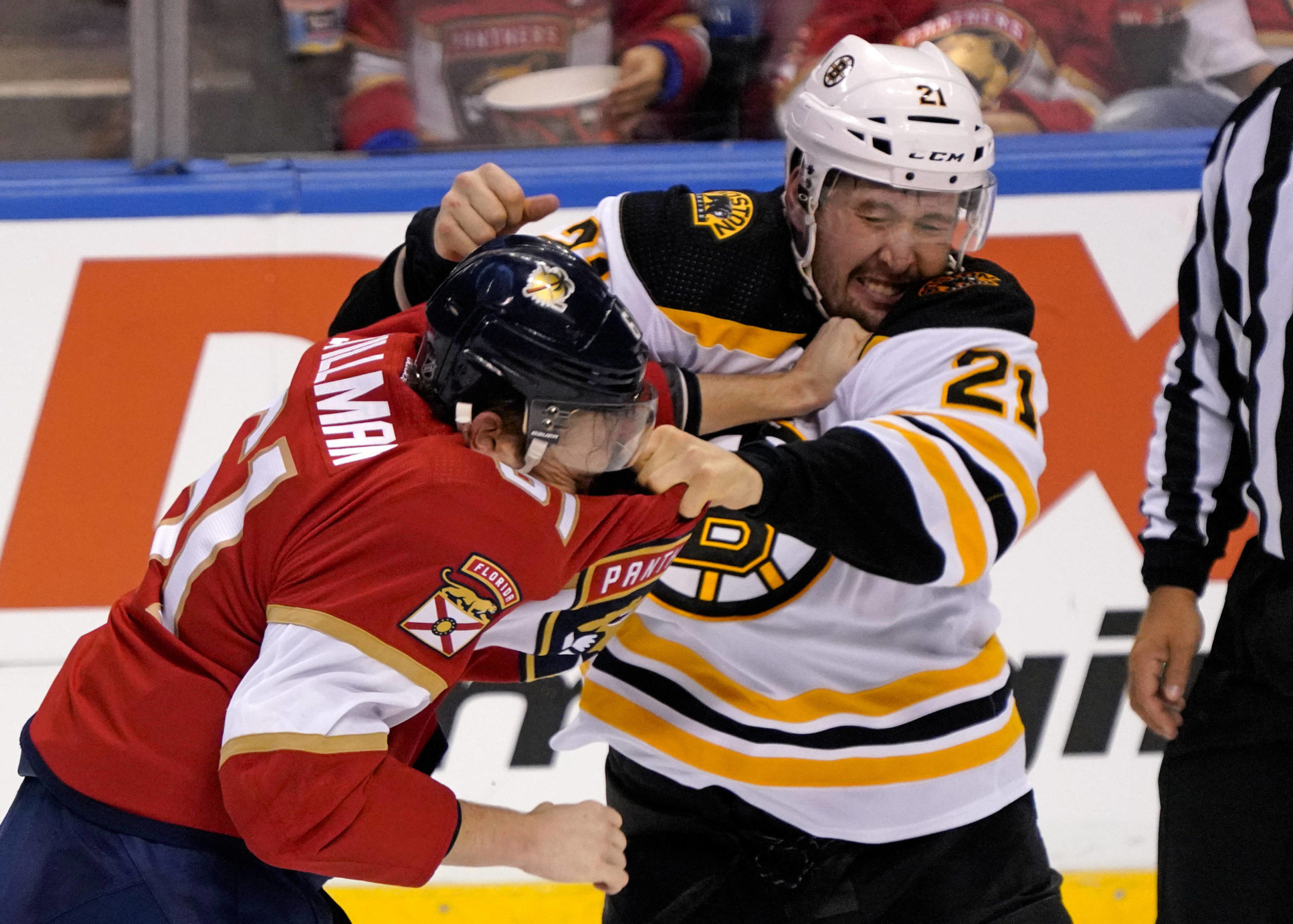
Ritchie is a fine player on a two-year, $2.5 million AAV contract that appears to be about fair market value. He brings a physical element to the table and can play a net-front role on the power play. He scored 15 goals in 56 games last season, which equates to a 22-goal pace over 82 games. However, it’s worth noting that he struggled to score in the playoffs, played primarily with David Krejci, shot 12.4%, and scored more on the man advantage than we can probably expect going forward.
Ritchie typically does not grade out well by Evolving Hockey’s goals above replacement, largely because of his terrible penalty differential. Simply put, he takes far too many penalties and doesn’t draw any either (which may be due to his lack of speed). It’s a major weakness to his game that cannot be overlooked. He graded out as a replacement-level player last season as a result of the discipline issue.
The 25-year-old’s best season by the numbers came back in 2018-19 with Anaheim, where he looked like a fine second-line winger. He’s at least proven that he can produce like a second-line player before, but that season looks like an outlier and he generally appears to be a decent player who eliminates almost all of the value that he provides by taking too many penalties.
I probably wouldn’t have signed Nick Ritchie. Some will use the cliche that he plays playoff hockey, but he’s really struggled to put the puck in the net come playoff time. I was hoping that they could use their remaining cap space to add more of a clear top-six winger to help replace Hyman (likely through trade) whereas I view Ritchie as more of a third line type. His lack of speed hurts him defensively, typically requiring some sheltering from the coaching staff as a result.
If Ritchie continues to be a liability from a penalty perspective, he won’t be much of a difference maker. If he can fix that part of his game, he could be a solid contributor, but I don’t think he carries a ton of upside. The Bruins decided that he wasn’t worth a qualifying offer after all, so it’s tough to call this signing a bargain. I like adding a physical player who can drop the gloves when needed, but now that the Leafs have signed Ritchie, I’m not sure where Wayne Simmonds fits into the lineup.
There is a rather large segment of the fanbase who will applaud just about any addition involving a power forward almost regardless of price. The trade for Nick Foligno was incredibly popular at the time, while David Clarkson was basically treated like the next Wendel Clark when he signed here in 2013. The Ritchie signing is much different as there are no draft picks involved here and it’s just a two-year deal at a reasonable cap hit. However, it should be clear that the team’s toughness was not the issue against the Montreal Canadiens in the playoffs.
If Ritchie continues to be a liability in terms of putting his team shorthanded, this signing won’t look like such a good call. The $2.5 million cap hit won’t completely crush them, but there is an opportunity cost associated with this signing and it will be clear that they could have spent this money more effectively. If Ritchie can limit the undisciplined minor penalties, play some net-front on the power play, add some nastiness, and produce like a solid middle-six forward, this deal will be perfectly fine.
Overall Thoughts and Next Steps
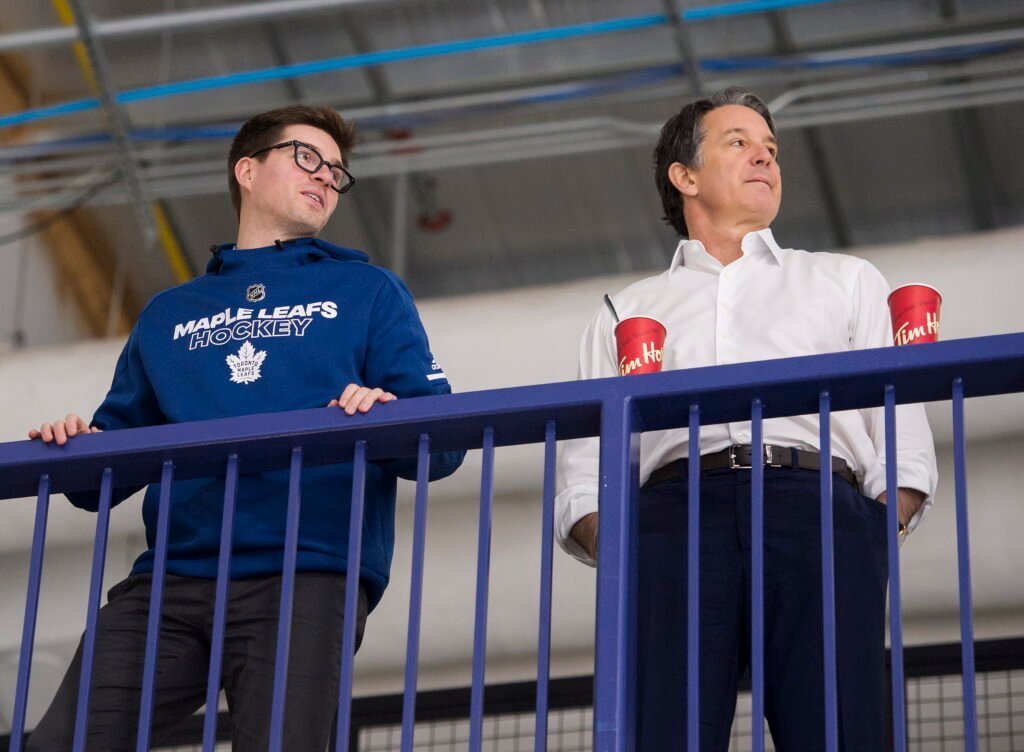
Overall, I hope that the Leafs can “hit” on at least three of these five signings. Mrazek is the most important one by far as he was given both the highest cap hit and the longest term, plus he plays the most important position in hockey. If Mrazek ends up starting in the playoffs and stands on his head, he could single-handedly make this a successful offseason for the Leafs, even if the other additions are mediocre.
Kase is also a major X-factor. His outcomes range from playing a handful of games to someone who can produce like Nylander at 5-on-5. It’s tough to count on him, especially after Boston traded a first-round pick for him only to not give him a qualifying offer a year later. However, he is good enough to completely change the narrative of this offseason if healthy.
Bunting is a very low-risk move. Kampf’s cap hit also makes him a fairly low-risk move, but they need him to play as advertised and they have some bottom-six scoring questions due to the combination of him and Simmonds. Ritchie could be a half-decent top-six winger or he could be replacement level due to a horrendous penalty differential.
Ultimately, it’s hard to give the Leafs an “A” grade for their offseason to date. Perhaps we’ll look back and decide that they deserve one in the future, especially if Mrazek is outstanding, Kase stays healthy, and two of Bunting, Ritchie, and Kampf turn out as bargains. However, at this point in time, I can’t really say that they’ve done anything special that makes them clearly better next season.
Of course, it’s not like they’ve had one of the worst off-seasons in the NHL, either, as they haven’t made any horrendous trades or signings.
At this point in time, I’m assuming that Kurtis Gabriel, Josh Ho-Sang, Alex Biega, Michael Amadio, Brett Seney, and Carl Dahlstrom are primarily playing for the Marlies, so I’m not including them in the evaluation all that much. Brennan Menell is another player who could potentially bump the offseason grade up a bit if he can hold down an NHL job, but given that he only has five NHL games under his belt, he’s not moving the dial much at this point.
In terms of the next steps, the Leafs currently have 14 forwards on their projected roster, which would put them over the cap. They would only be able to have six defensemen on the roster and they’d have a hard time calling up someone like Timothy Liljegren without using an emergency recall. None of Pierre Engvall, Adam Brooks, or Joey Anderson can be sent down without going through waivers, but I wouldn’t be surprised if someone like Anderson was moved as a result.
On a positive note, the Leafs did not trade any meaningful picks or prospects this offseason apart from Filip Hallander. They still have their first and second-round picks for next season, and top prospects such as Nick Robertson, Rodion Amirov, Timothy Liljegren, Topi Niemela, and Roni Hirvonen remain with the organization. They have the capital to make a major move at the deadline. Assuming that their addition(s) work out better than Nick Foligno this time around, the post-deadline version of this team could end up being better than last year’s playoff roster.
There are still some questions left to be answered this offseason. The decision (or lack thereof) on Morgan Rielly will have major implications. The team doesn’t have its picks for 2022 in rounds three, four, five, six, and seven. They could try to re-stock a bit with smaller moves. Since they didn’t use the pick to acquire someone like Darcy Kuemper, they still have their first-round pick to use as a trade asset at the deadline if they wish.
Future implications aside, if you’re looking for reasons to be optimistic about the 2021-22 Toronto Maple Leafs, you start by looking at what this team could look like if they add someone like Claude Giroux, Joe Pavelski, Johnny Gaudreau, Tomas Hertl, or Filip Forsberg at the deadline. In an ideal world, they do something similar to the Jake Muzzin trade and land an impact player with multiple years of control.
At this point, I don’t think Toronto’s current roster is as good as their most recent playoff roster, but I do believe that could change by game one of next year’s playoffs.


